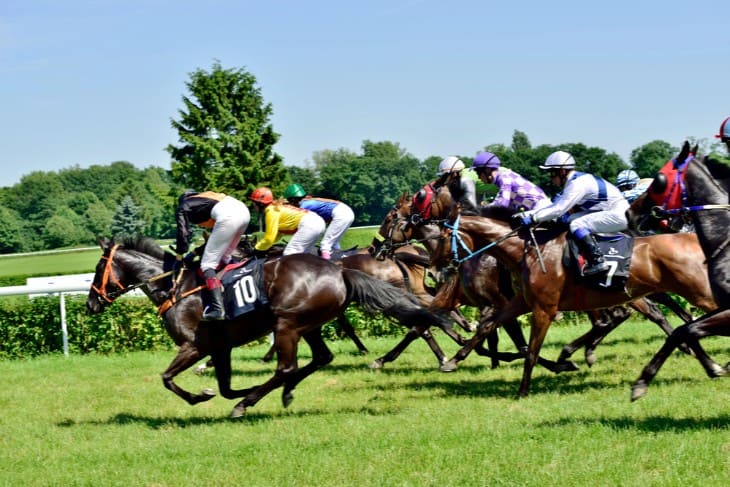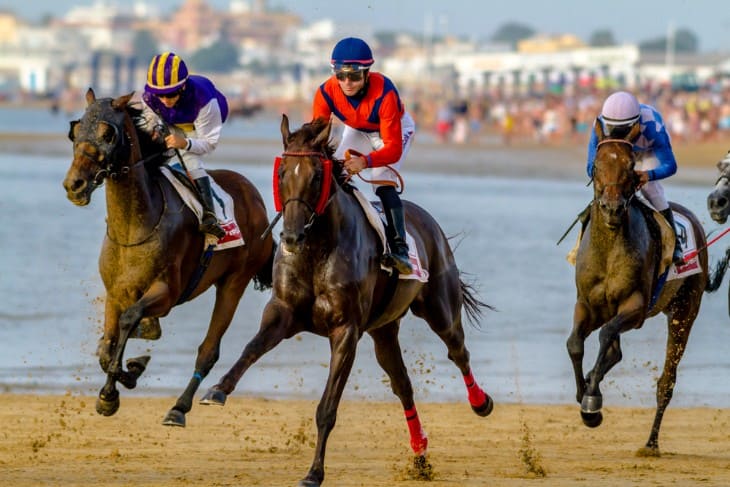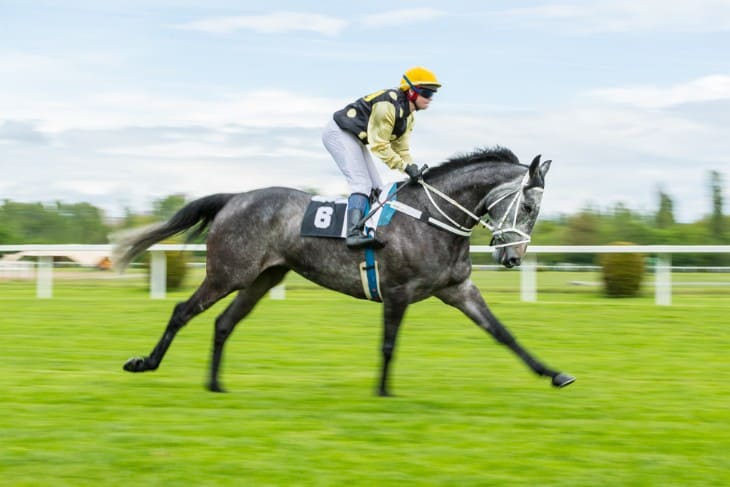- Key Principles of Handicap Racing in Grand National
- Strategies for Handicap Betting in the Grand National
- Analysing Past Winners of the Grand National
- Handicapping Systems: Methods and Effectiveness
- Technology and Data Analysis in Modern Handicap Betting
- Notable Handicap Bets in Grand National History
- Conclusion
Handicap betting is a form of wagering that attempts to level the playing field in sports where participants have varying levels of skill or advantage. In horse racing, this is achieved by assigning different weights to the horses based on their past performances and perceived abilities. The primary objective is to give every horse an equal chance of winning, making the race more competitive and unpredictable. This type of betting is especially prevalent in races like the Grand National, where a diverse range of horses compete.
The concept revolves around the handicapper, an official who determines the weights to be carried by each horse. These weights are based on factors such as past race results, horse age, and recent performance. The better the horse's record, the more weight it carries. This method adds a layer of strategy to betting, as punters must consider not just the horse's ability but also how it might perform under its assigned handicap.
The Grand National is a historic event in British horse racing, renowned worldwide for its challenging course and the calibre of its participants. Over the years, the Grand National has evolved, but it has consistently maintained its reputation as a test of endurance and skill for both horse and jockey. The race's history is filled with memorable moments and legendary horses, contributing to its mythos. As a handicap race, it offers a unique challenge in the world of horse racing, as the handicapping system aims to level the field, adding an extra layer of complexity and excitement for both participants and spectators.
Key Principles of Handicap Racing in Grand National
The essence of handicap betting in horse racing is to equalise the chances of all horses in the race, regardless of their inherent abilities. This is achieved by assigning weights to each horse based on their past performances. The core principle is that a horse that has demonstrated higher ability in previous races will carry more weight than its lesser-performing counterparts. This system is designed to ensure a close and competitive race, making the outcome less predictable and more exciting for bettors and spectators alike.
Handicap racing requires a deep understanding of each horse's capabilities and how they are likely to perform under different weight conditions. It's not just about picking the fastest horse; it's about assessing which horse can perform best with the additional weight. This complexity adds a strategic element to betting, as it requires bettors to analyse a range of factors, including form, weight, and the horse's ability to handle the Aintree course.
Strategies for Handicap Betting in the Grand National
Effective strategies in handicap betting are crucial for success, especially in a race as unpredictable as the Grand National. Here are some key points to consider:
- Form Analysis and Performance Trends: Beyond merely checking recent performances, detailed form analysis involves understanding the conditions under which a horse performed well or poorly. This includes analyzing performance trends over similar distances, on similar ground conditions, and against comparable competition. Bettors should look for patterns of improvement or decline, which could indicate a horse's readiness for the Grand National challenges.
- Weight Consideration: Assessing the impact of weights is more nuanced than comparing absolute numbers. It involves understanding the horse's history with various weights and how these weights have affected its speed and stamina. A detailed analysis would also consider the weight distribution in the context of the Grand National's course specifics, such as its notorious fences and the long distance, to determine if a horse can sustain its performance under its assigned handicap.
- Jockey Experience and Strategy: The role of the jockey is pivotal, especially in a handicap race as grueling as the Grand National. Detailed consideration of a jockey's experience should not just account for their general experience but specifically their track record in handicap races, their previous performances in the Grand National, and their ability to strategize under varying race conditions. A jockey's decision-making and adaptability can be the difference between a horse overperforming or underperforming its handicap.
- Course History and Suitability: Some horses have a proven track record at Aintree, showing a particular aptitude for the unique challenges it presents. A detailed analysis here would look at not just past performances but also the specifics of those performances: How did the horse handle the Becher's Brook and The Chair? Was the horse comfortable in large fields? This level of detail can give bettors insights into a horse's potential beyond simple win/loss records.
- Weather and Track Conditions: The impact of weather on the Grand National can be profound, affecting not just the day's conditions but also the ground's consistency throughout the course. A deeper analysis would consider not just the weather on race day but also in the days leading up to the event, as this can alter the track conditions significantly. Bettors should consider each horse's performance in various conditions, including their adaptability to sudden changes in weather or track conditions.
- Historical Data and Predictive Modeling: Modern betting strategies often incorporate advanced statistical models and historical data analysis. This involves not just looking at past winners but analyzing a wide range of data points to identify patterns that might predict future performance. This can include sophisticated algorithms that take into account not just horse, jockey, and trainer performance but also variables like breeding, race tactics, and even market movements.

Analysing Past Winners of the Grand National
Studying past winners of the Grand National provides valuable insights for handicap betting enthusiasts. By examining the profiles of previous winners, bettors can identify patterns and traits that may influence their betting decisions. Key factors often include the age of the horse, its experience in similar races, and its performance under various weights. For instance, younger horses may have less experience but could offer more potential for improvement, while older horses might have a proven track record that instils confidence in their abilities.
Another critical aspect is the analysis of the trainers and their history in the Grand National. Trainers with a record of success in this race often have a deep understanding of what it takes to win, from preparing the horse to strategising for the unique challenges of the Aintree course. This information can be pivotal in making informed betting choices, as it adds a layer of understanding about the horse's potential performance in the race.
Handicapping Systems: Methods and Effectiveness
Handicapping systems are the backbone of handicap betting in horse racing, and understanding them is essential for successful wagering in events like the Grand National. These systems employ various methods to assign weights to horses, with the aim of creating a competitive and balanced race. Here are some key aspects to consider:
- Official Handicapper: The official handicapper, an expert appointed by racing authorities, is responsible for assessing the performance of each horse and determining its weight. Their decisions are based on a combination of factors, including past performances, recent form, and expert analysis.
- Weight Range: Horses in handicap races are assigned weights within a defined range. The spread of weights aims to create a level playing field, allowing horses of different abilities to compete fairly. The effectiveness of this weight range can influence the race's competitiveness.
- Consistency: The effectiveness of a handicapping system is evaluated by how accurately it reflects a horse's true ability. Systems that consistently produce competitive races are considered successful, as they achieve the primary objective of handicap betting.
- Adjustments: Handicaps can change from race to race based on a horse's recent performance. Understanding how adjustments are made and their impact on a horse's chances is crucial for bettors.

Technology and Data Analysis in Modern Handicap Betting
In the modern era, technology has revolutionised handicap betting in horse racing. The availability of data, advanced analytics, and digital tools have transformed the way punters approach betting on events like the Grand National. Here's how technology and data analysis have become integral to the betting process:
- Data Gathering: Punters can access a wealth of data about horses, jockeys, trainers, and races. This data includes past performances, race statistics, and even historical weather conditions. Gathering and analysing this data is crucial for making informed bets.
- Algorithmic Predictions: Sophisticated algorithms and predictive models can assess multiple variables and provide odds and predictions for race outcomes. These models can incorporate handicapping information, past performances, and other relevant factors.
- Live Streaming and Analysis: Technology allows punters to watch races live and access real-time analysis. This can help in evaluating a horse's performance during the race and making in-play betting decisions.
- Mobile Betting Apps: Mobile apps have made it easier for bettors to place wagers conveniently. These apps often provide real-time updates, live odds, and betting recommendations.
Incorporating technology and data analysis into handicap betting strategies is increasingly common in the modern betting landscape, offering punters a more data-driven approach to making informed wagers in events like the Grand National.
Notable Handicap Bets in Grand National History
Examining real-life case studies of handicap betting in the Grand National provides valuable insights into successful and unsuccessful strategies. These historical examples offer a practical understanding of how handicapping and betting strategies can impact race outcomes. Here are a few notable case studies:
- Red Rum: The legendary Red Rum's three Grand National victories in the 1970s are a testament to handicapping success. Despite carrying heavy weights, Red Rum's exceptional ability and the skilled guidance of his jockey, Brian Fletcher, led to triumphs that are still celebrated today.
- Foinavon's Surprise Win: In 1967, Foinavon famously won the Grand National at odds of 100/1. His victory was largely attributed to a chaotic pile-up at the 23rd fence, which allowed him to avoid the mayhem and secure an unlikely victory.
- Auroras Encore: In 2013, Auroras Encore, a 66/1 outsider, won the Grand National. This underdog victory showcased the unpredictability of handicap racing and how a well-prepared horse can seize the opportunity.
- Failures and Near-Misses: It's equally important to study cases where favourites or well-fancied horses underperformed. Understanding the factors behind these failures can provide valuable lessons for bettors.
Conclusion
In conclusion, handicap betting is an integral part of the Grand National, adding intrigue and complexity to the race. Over the years, this unique form of wagering has evolved, incorporating technology, data analysis, and a deep understanding of psychological factors. The Grand National continues to be a race where both novice punters and seasoned bettors can test their skills.





